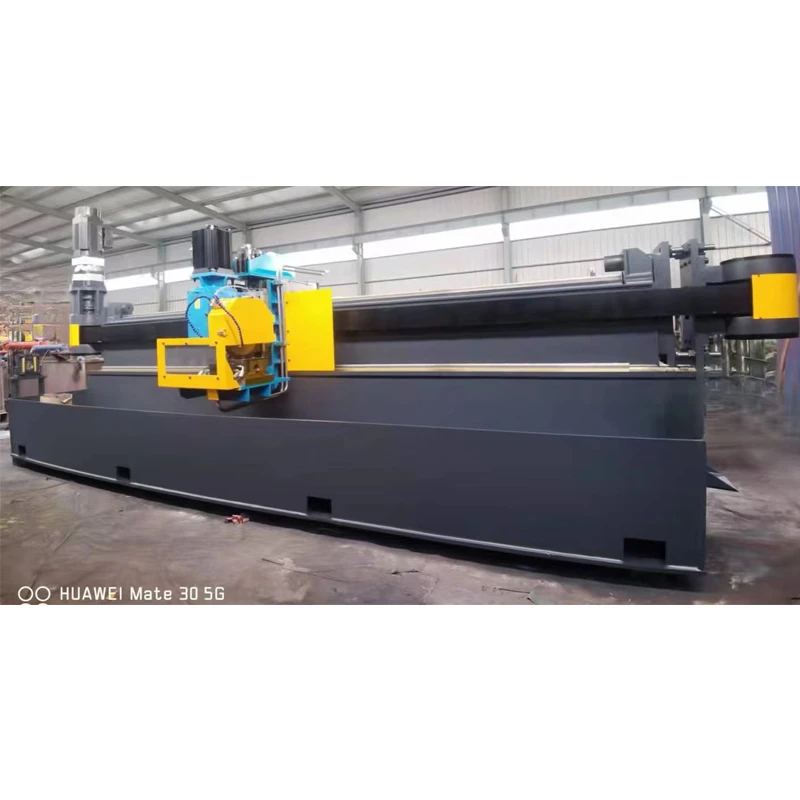roll forming
The Process and Advantages of Roll Forming
Roll forming is a manufacturing process that involves the continuous shaping of metal sheets or strips into specific profiles. This method has gained immense popularity across various industries due to its efficiency and the high-quality products it can produce. By feeding metal through a series of rollers, manufacturers can create complex cross-sectional shapes without significant waste or the need for extensive secondary operations. In this article, we will explore the roll forming process, its applications, and the advantages it offers.
The Roll Forming Process
The roll forming process begins with a flat metal strip, typically made of steel, aluminum, or other alloys. This strip is fed into a series of rollers that are arranged in a specific sequence. Each roller is designed to tweak the shape of the metal slightly, building up to the desired profile gradually. This continuous operation allows for the efficient production of long lengths of material, which can be cut to size as needed.
There are several key stages in the roll forming process
1. Feeding the Material The metal strip is unrolled and fed into the machine. Precision in feeding is crucial to ensure that the material aligns correctly with the rollers.
2. Roll Setup The rollers are specifically designed based on the profile required. Each roller is usually part of a multi-stage system, where each stage modifies the profile incrementally.
3. Forming As the metal passes through the rollers, it bends and shapes into the desired cross-section. The process can be adjusted by changing the roller configuration to achieve different profiles.
4. Cutting and Finishing After the metal has been formed, it can be cut to the needed lengths. Additional operations, such as punching holes or adding other features, can also be done in-line to enhance efficiency further.
Applications of Roll Forming
The applications of roll forming are diverse
. Industries that commonly utilize this process include- Construction Roll-formed metal components like studs, tracks, and roofing panels are widely used in building structures due to their lightweight yet sturdy characteristics.
- Automotive Many car manufacturers rely on roll forming to produce components like reinforcement beams, cross members, and structural parts.
roll forming

- Appliances Household appliances often have roll-formed parts, such as frames and brackets, that require specific shapes for functionality and aesthetics.
- Furniture Roll forming is used to create metal furniture frames and decorative elements, combining strength and style.
Advantages of Roll Forming
The roll forming process offers numerous benefits over other manufacturing techniques like stamping or casting
1. Material Efficiency Roll forming uses raw materials judiciously, significantly reducing waste compared to processes that require cutting out shapes from larger sheets.
2. Cost-Effectiveness High volume production capabilities mean that manufacturing costs can be kept low. Once the tooling is in place, running costs are minimal, making roll forming a cost-efficient choice for bulk production.
3. Versatility The process can produce a wide variety of shapes and sizes, ranging from simple angles to complex profiles, making it suitable for different applications.
4. Consistency and Precision Roll forming produces parts with a high level of uniformity and precision, ensuring that each piece meets tight tolerances.
5. Strength and Integrity The continuous bending of the metal strip adds strength to the final product. Roll-formed parts can often withstand more stress than those produced by some other methods.
6. Post-Processing Capabilities The ability to add features such as holes and notches during the forming process further streamlines production and reduces handling.
Conclusion
In summary, roll forming is a highly effective method for producing metal components with complex shapes. Its applications span various industries, ranging from construction to automotive. With its numerous advantages, including material efficiency, cost-effectiveness, and high precision, roll forming is likely to remain a preferred choice for manufacturers looking for both quality and economy in their production processes. As technology continues to advance, the possibilities for roll forming may expand even further, paving the way for new innovations and applications in the manufacturing landscape.
-
High Frequency Straight Seam Welded Pipe Production Line-BzZhou Xinghua Machinery Equipment Manufacturing Co., LTD.|Precision Welding, High EfficiencyNewsJul.30,2025
-
High Frequency Straight Seam Welded Pipe Production Line|BzZhou Xinghua|Precision Welding&EfficiencyNewsJul.30,2025
-
High Frequency Straight Seam Welded Pipe Production Line - BzZhou Xinghua|Precision Engineering&EfficiencyNewsJul.30,2025
-
High-Frequency Straight Seam Welded Pipe Production Line-BzZhou Xinghua Machinery Equipment Manufacturing Co., LTD.NewsJul.30,2025
-
High-Frequency Straight Seam Welded Pipe Production Line-BzZhou Xinghua Machinery Equipment Manufacturing Co., LTD.|Precision Manufacturing, High EfficiencyNewsJul.30,2025
-
High Frequency Straight Seam Welded Pipe Production Line-BzZhou Xinghua Machinery Equipment Manufacturing Co., LTD.|Precision Steel Pipe Manufacturing&Industrial EfficiencyNewsJul.29,2025


